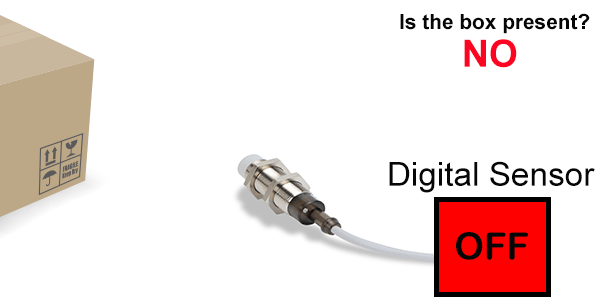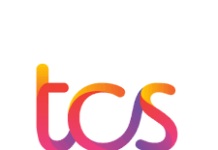Digital image processing
• In computer science, digital image processing is the use of computer. Algorithms to perform image processing on digital images
• As a subcategory or field of digital signal processing. Digital image processing has many advantages over analog image processing.
• It allows a much wider range of algorithms. Which has to be applied on the input data. Can avoid problems such as the build-up of noise and signal distortion during processing.
History : DIGITAL IMAGE PROCESSING
• Many of the techniques of digital image processing. Digital picture processing often called developed in the 1960s at the Jet Propulsion Laboratory. With application to satellite imagery, wire-photo standards conversion, medical imaging. videophone, character recognition, and photograph enhancement.
• The purpose of early image processing was to improve. The quality of the image.
• It aimed at human beings to improve. The visual effect of people.
• In image processing, the input is a low-quality image. The out put is an image with improved quality.
• Common image processing include image enhancement. Restoration, encoding, and compression.
• The first successful application was the American. American Jet Propulsion Laboratory (JPL).
• They used image processing techniques. Such as geometric correction, gradation transformation, noise removal, etc. On the thousands of lunar photos sent back by the Space Detector Ranger 7 in 1964. Taking into account the position of the sun and the environment of the moon.
• The impact of the successful mapping of the moon’s surface map by the computer has been a huge success.
• Later, more complex image processing performed on the nearly 100,000 photos sent back by the spacecraft. So that the topographic map, color map and panoramic mosaic of the moon obtained. Which achieved extraordinary results and laid a solid foundation for human landing on the moon.
• With the fast computers and signal processors available in the 2000s. Digital image processing has become the most common form of image processing. It was generally used because it is not only the most versatile method, but also the cheapest.
• Digital image processing technology for medical applications inducted. Thus, into the Space Foundation Space Technology Hall of Fame in 1994.
Image sensors
• The basis for modern image sensors is metal-oxide-semiconductor (MOS) technology. Which originates from the invention of the MOSFET (MOS field-effect transistor). Its by Mohamed M.Atalla and Dawon Kahng at Bell Labs in 1959.
• This led to the development of digital semiconductor image sensors. Including the charge-coupled device (CCD) and later the CMOS sensor.
• The charge-coupled device invented Boyle and George E. Smith at Bell Labs in 1969.
• While researching MOS technology, they realized that an electric charge the analogy of the magnetic bubble. That it stored on a tiny MOS capacitor.
• As it was fairly straight forward to fabricate a series of MOS capacitors in a row. They connected a suitable voltage to them so that the charge could stepped along from one to the next.
• The CCD is a semiconductor circuit that later used. In the first digital video cameras for television broadcasting.
• The NMOS active-pixel sensor (APS) invented. By Olympus in Japan during the mid-1980s.
• This enabled by advances MOS semiconductor device fabrication. With MOSFET scaling reaching smaller micron and then sub-micron levels.
• The NMOS APS fabricated by Tsutomu Nakamura’s team at Olympus in 1985.
• The CMOS active-pixel sensor (CMOS sensor) later developed. It was by Eric Fossum’s team at the NASA Jet Propulsion Laboratory in 1993. By 2007, sales of CMOS sensors had surpassed CCD sensors.

Image compression
• An important development in digital image compression technology was the discrete cosine transform (DCT). A lossy compression technique first proposed by Nasir Ahmed in 1972.
• DCT compression became the basis for JPEG, which introduced by the Joint Photographic Experts Group in 1992.
• JPEG compresses images down to much smaller file sizes. It has become the most widely used image file format on the Internet.
• Its highly efficient DCT compression algorithm was largely responsible for the wide proliferation of digital images. Digital photos,with several billion JPEG images produced every day as of 2015.

Digital signal processor (DSP)
• Electronic signal processing revolutionized by the wide adoption of MOS technology in the 1970s.
• MOS integrated circuit technology was the basis for the first single-chip microprocessors. Microcontrollers in the early 1970s, and then the first single-chip digital signal processor (DSP) chips in the late 1970s.
• DSP chips have since widely used in digital image processing.
• The discrete cosine transform (DCT) image compression algorithm has widely implemented in DSP chips. With many companies developing DSP chips based on DCT technology.
• DCTs widely used for encoding, decoding, video coding, audio coding, multiplexing, control signals, signaling, analog-to-digital conversion. Formatting luminance and color differences, and color formats such as YUV444 and YUV411.
• DCTs also used for encoding operations such as motion estimation, motion compensation, inter-frame prediction, quantization, perceptual weighting. Entropy encoding, variable encoding, and motion vectors. Decoding operations such as the inverse operation between different color formats (YIQ, YUV and RGB) for display purposes.
• DCTs also commonly used for high-definition television (HDTV) encoder/decoder chips

Digital image transformations
Filtering
• Digital filters used to blur and sharpen digital images. Filtering can performed by:
• Convolution with specifically designed kernels (filter array) in the spatial domain. Masking specific frequency regions in the frequency (Fourier) domain.
Image padding in Fourier domain filtering
• Images typically padded before transformed to the Fourier space, the high pass filtered images.
Filtering Code Examples
•MATLAB example for spatial domain high pass filtering.

Affine transformations
Affine transformations enable basic image transformations including scale, rotate, translate, mirror and shear
Applications
Digital camera images
Digital cameras generally include specialized digital image processing hardware – either dedicated chips or added circuitry on other chips. To convert the raw data from their image sensor into a color-corrected image in a standard image file format.
Film
Westworld (1973) was the first feature film to use the digital image processing. To pixellate photography to simulate an android’s point of view.
Click Here To Visit Our Website





